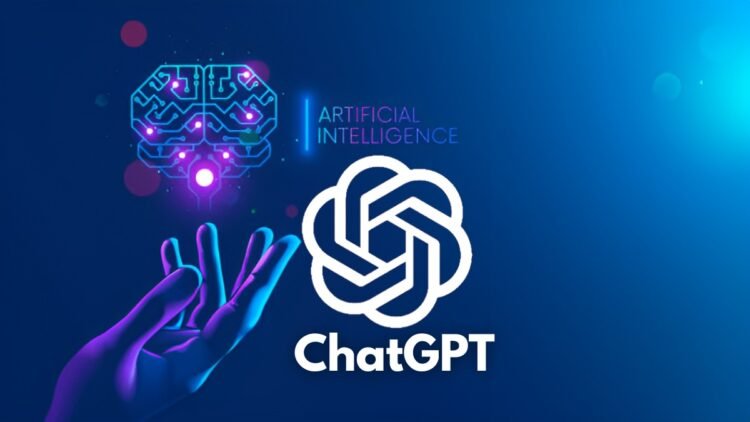Introduction to ChatGPT
Imagine having an assistant who can generate human-like text, provide creative ideas, and even help overcome writer’s block—all in multiple languages. Welcome to the world of ChatGPT, a powerful AI tool developed by OpenAI. For content creators and bloggers, ChatGPT offers a unique opportunity to enhance their writing process and produce high-quality content effortlessly.
In this blog post, we’ll explore how ChatGPT can transform your blogging experience. You’ll learn about its capabilities, real-world applications, and best practices for integrating it into your workflow. Whether you’re a seasoned blogger or just starting out, ChatGPT can be a game-changer for your content creation needs.
Understanding ChatGPT’s Capabilities
What is ChatGPT?
ChatGPT is an advanced language model developed by OpenAI. It can generate human-like text based on the input it receives, making it an invaluable tool for content creators. Whether you need help with grammar, style, or generating new ideas, ChatGPT has got you covered.
Language Support
One of the standout features of ChatGPT is its multilingual capabilities. It supports a variety of languages, including English, Spanish, French, and even Japanese. This makes it a versatile tool for bloggers who cater to a global audience. For instance, if you want to write content in German, you can use “ChatGPT deutsch kostenlos” to get started without spending a dime.
Modes of Interaction
ChatGPT offers different modes of interaction to suit various needs. You can use it for:
- Content Generation: Generate entire blog posts, articles, or stories.
- Editing and Proofreading: Improve grammar and style.
- Idea Generation: Brainstorm new topics and angles for your blog.
Steps to Writing a Blog Post Using ChatGPT
Initial Setup and Configuration
Before you can start writing, you’ll need to set up ChatGPT. Here’s a quick guide:
- Sign Up: Create an account on the OpenAI platform.
- Access the API: Get your API key to interact with ChatGPT.
- Choose Your Tool: Decide whether you’ll use the web interface or integrate ChatGPT into your existing tools like Google Docs or Microsoft Word.
Best Practices for Engaging with ChatGPT
To get the most out of ChatGPT, keep these tips in mind:
- Be Specific: Provide clear and concise prompts to get relevant responses.
- Iterate: Don’t hesitate to ask follow-up questions or request revisions.
- Combine Human Touch: Use ChatGPT as a tool to enhance your creativity, not replace it.
Overcoming Writer’s Block and Generating Ideas
One of the most significant advantages of ChatGPT is its ability to help you overcome writer’s block. Here’s how:
- Prompt Suggestions: Ask チャットGPT for ideas on a specific topic.
- Outline Creation: Use ChatGPT to generate an outline for your blog post.
- First Drafts: Get a rough draft written by ChatGPT and then refine it.
Real-World Examples
Travel Blog Post
Consider a travel blog that used ChatGPT to create detailed itineraries and travel guides. A blogger needed content for a trip to Paris but was running out of ideas. By prompting ChatGPT, they received a well-structured itinerary, complete with restaurant recommendations and sightseeing spots. This significantly enhanced the value and readability of the post, making it more engaging for readers.
Educational Blog
An education blog aimed at simplifying complex concepts used ChatGPT to break down difficult topics. For example, an article on quantum physics was made more accessible by using ChatGPT to generate simplified explanations and analogies. This approach made the content more engaging and understandable for a broader audience.
Technology Review Blog
A technology review blog leveraged ChatGPT to create in-depth and technical explanations of new gadgets. This improved the overall quality and SEO ranking of the content. By providing detailed specifications and user experience insights, the blog attracted more readers and improved its credibility.
Lifestyle Blog
A lifestyle blog used ChatGPT to brainstorm and diversify content ideas. The blogger was struggling to come up with new topics but found inspiration by asking ChatGPT for suggestions. This led to a wider variety of posts, from DIY crafts to wellness tips, ultimately increasing reader engagement.
Challenges and Limitations
Potential Drawbacks
While ChatGPT offers numerous benefits, it’s essential to be aware of its limitations. The AI can sometimes generate content that lacks depth or context. It’s crucial to review and refine the output to ensure it aligns with your blog’s quality standards.
Situations Where ChatGPT Might Not Be Ideal
There are scenarios where ChatGPT might not be the best tool for content creation. For instance, highly specialized topics requiring expert knowledge may need human expertise. Similarly, sensitive subjects that demand a nuanced approach should be handled with care.
Mitigating Challenges
To mitigate these challenges, always proofread and edit the content generated by ChatGPT. Use it as a supplement to your skills, not a replacement. Incorporate your unique voice and perspective to make the content truly yours.
Conclusion and Next Steps
In today’s fast-paced digital landscape, ChatGPT offers an innovative solution for content creators and bloggers. From overcoming writer’s block to generating high-quality content, the benefits are clear. By understanding its capabilities and best practices, you can seamlessly integrate ChatGPT into your workflow.
Ready to revolutionize your content creation process? Start exploring ChatGPT today and discover how it can elevate your blog to new heights. For those looking to get started, sign up for ChatGPT gratuito and experience the future of AI content creation.
Join the ranks of successful bloggers who have already harnessed the power of ChatGPT. Whether you’re writing in English, Spanish, or any other language, this AI tool is your new best friend in the world of content creation. Happy blogging!







